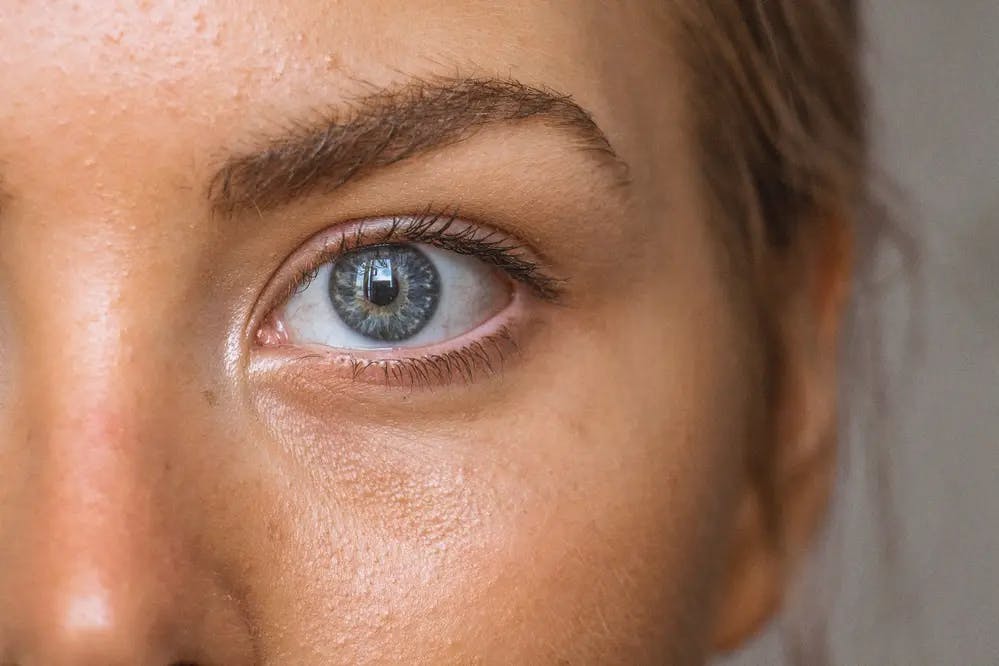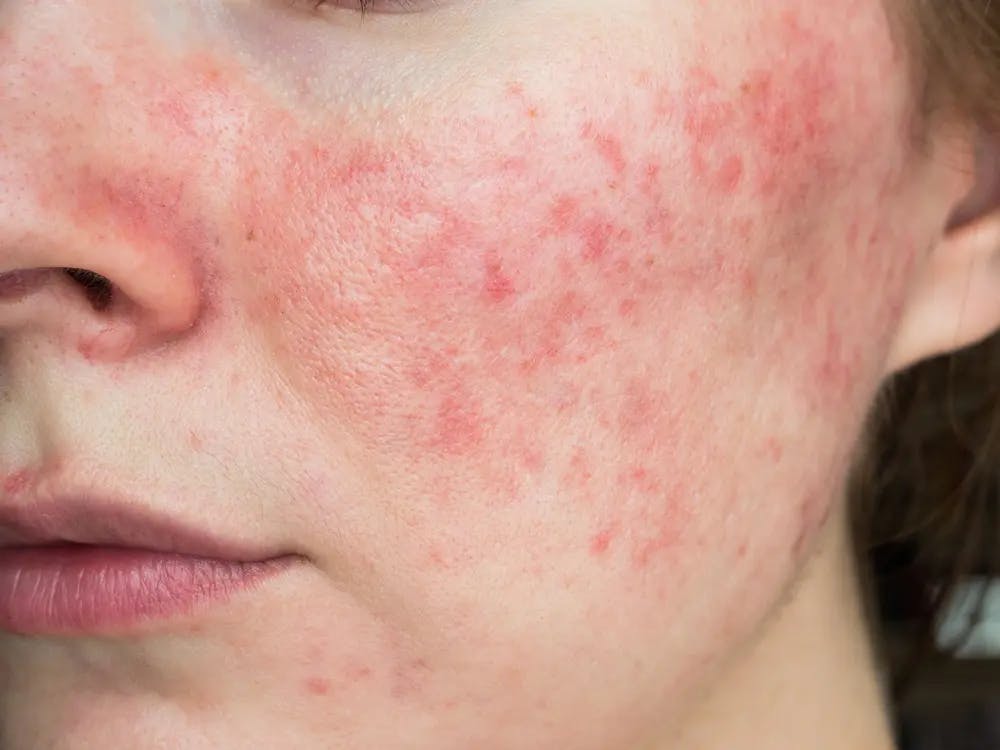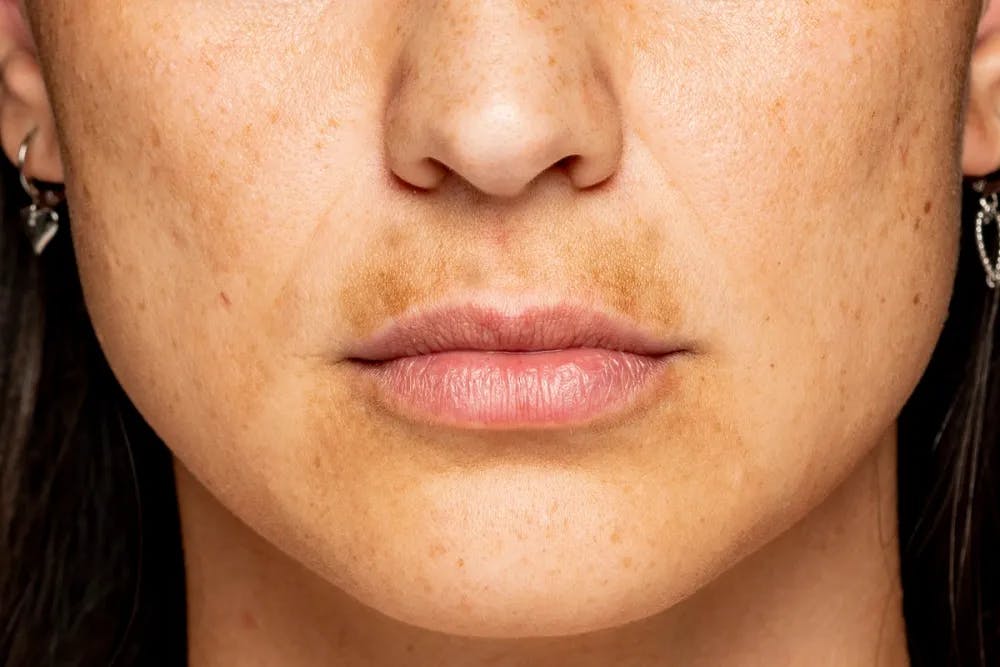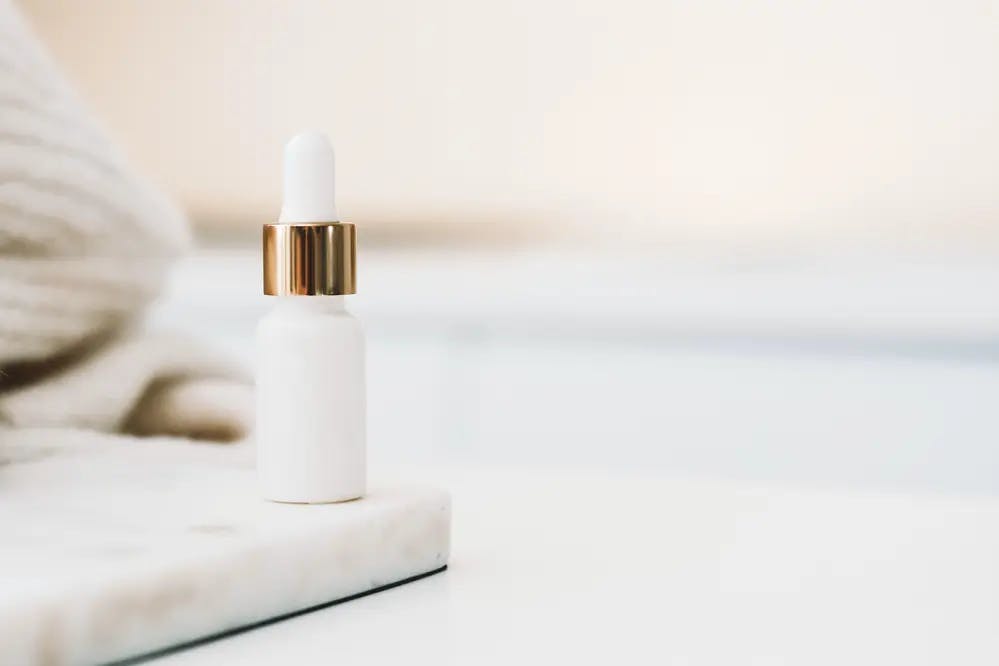Mineral Sunscreen vs. Chemical Sunscreen: Which is Better?
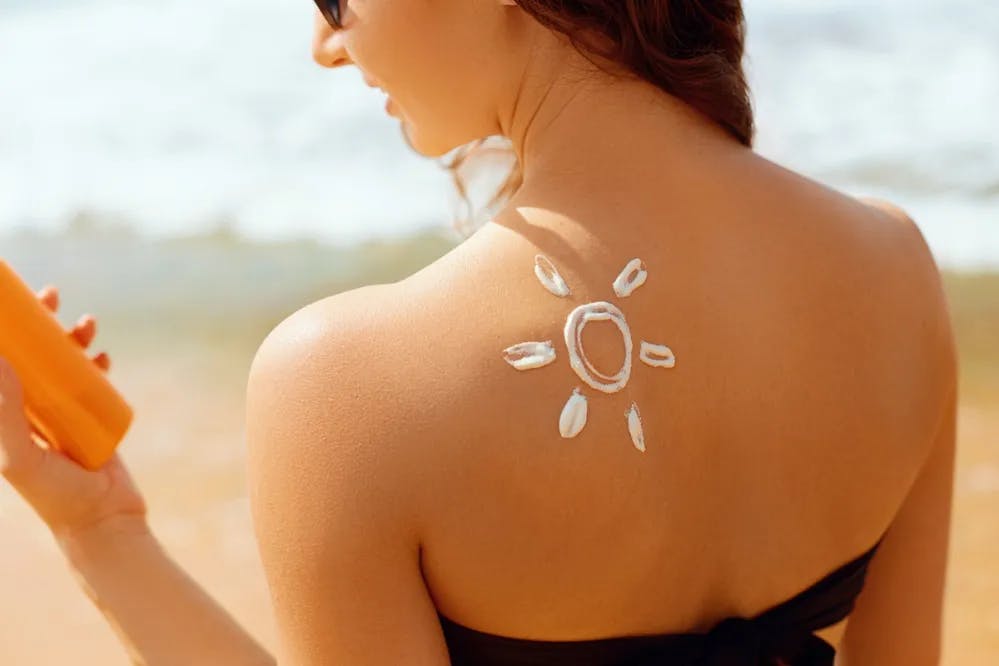
Table of Contents:
- What Even is Sunscreen, Anyway?
- What is SPF, And What Does This Number Tell Us?
- Why Do you Need Sunscreen: The Key Benefits
- Types of Sunscreens
- Physical or Mineral Sunscreens
- Chemical Sunscreens
- The Mechanisms of Mineral Sunscreens vs Chemical Sunscreens
- Pros of Mineral Sunscreens
- Cons of Mineral Sunscreens
- Pros of Chemical Sunscreens
- Cons of Chemical Sunscreens
- The Verdict: Mineral vs Chemical Sunscreens: Which is Better for Your Skin?
Using sunscreen is essential if you want to prevent sunburn and premature aging and reduce the risk of skin cancer. There are many products out there that can do the job, but each has slightly different mechanisms of action. In this article, we will explain the differences between mineral (or physical) sunscreens and chemical sunscreens and go through their pros and cons so you can pick the best solution for you.
What Even is Sunscreen, Anyway?
Simply put, sunscreen is a topical formulation (normally a cream or lotion) that you rub on your skin. This creates a thin film that can protect it from the sun. As it sits on the surface of your body, sunscreen can absorb, scatter, or reflect the incoming UV light (this will depend on the type of sunscreen you apply) and minimize its intensity and damage to skin cells. Some sunscreens act as physical blockers that reflect light away from your skin like a shield or mirror would do, while others absorb UV radiation and later on dissipate it in different wavelengths. They are both safe and effective, but each has its pros and cons.
What is SPF, And What Does This Number Tell Us?
SPF is short for sun protection factor. This number measures how much solar energy or UV radiation would be required to produce sunburn (when you apply sunscreen versus when you don’t).
The higher the SPF, the more time you will be able to be in the sun and remain protected. For example, under the same sun conditions, an SPF of 50 will give you more protection than one of 15. To achieve the SPF-rated protection that is stated in the bottle, you should apply two milligrams of sunscreen per square centimeter of skin. You can use the two-three-finger rule to measure the amount of sunscreen to apply to your whole face (don’t forget your neck and ears).
Why Do you Need Sunscreen: The Key Benefits
The UV radiation of solar light is high-energy radiation and can cause severe damage to skin cells. The reason behind this process has to do with the fact that radiation can oxidize skin proteins, lipids, and other vital biological components.1,2
Several mechanistic studies have identified the formation of highly reactive oxygen-centered free radical species as a result of exposure to UV radiation.3 This leads to permanent changes in skin cells, commonly known as sunburn or erythema, and can also cause skin hyperpigmentation, the appearance of fine wrinkle lines, and severe cases of skin cancer.
It's unlikely you'll be able to avoid solar light altogether (nor should you, as human skin needs solar light to synthesize vitamin D). This is why it's essential to ensure you are protecting your skin against high-energy UV radiation.

Types of Sunscreens
There are two main categories of sunscreens: Mineral sunscreens (also referred to as physical sunscreens) and chemical sunscreens.4 Let’s go through them in some more detail.
Physical or Mineral Sunscreens
Mineral sunscreens or physical sunscreens are made of inorganic oxides (for example, zinc oxide or titanium oxide ground into fine particles) that can reflect the incoming UV radiation.
Chemical Sunscreens
Chemical sunscreens, on the other hand, are composed of organic molecules with a conjugated double bond. These sunscreens can absorb incoming UV light and, through the process of electronic reconfiguration, emit it in different energy bands - thus mitigating the damage caused by UV radiation.
The Mechanisms of Mineral Sunscreens vs Chemical Sunscreens
Both types of sunscreens work slightly differently. A mechanistic illustration below describes their different mode of action.
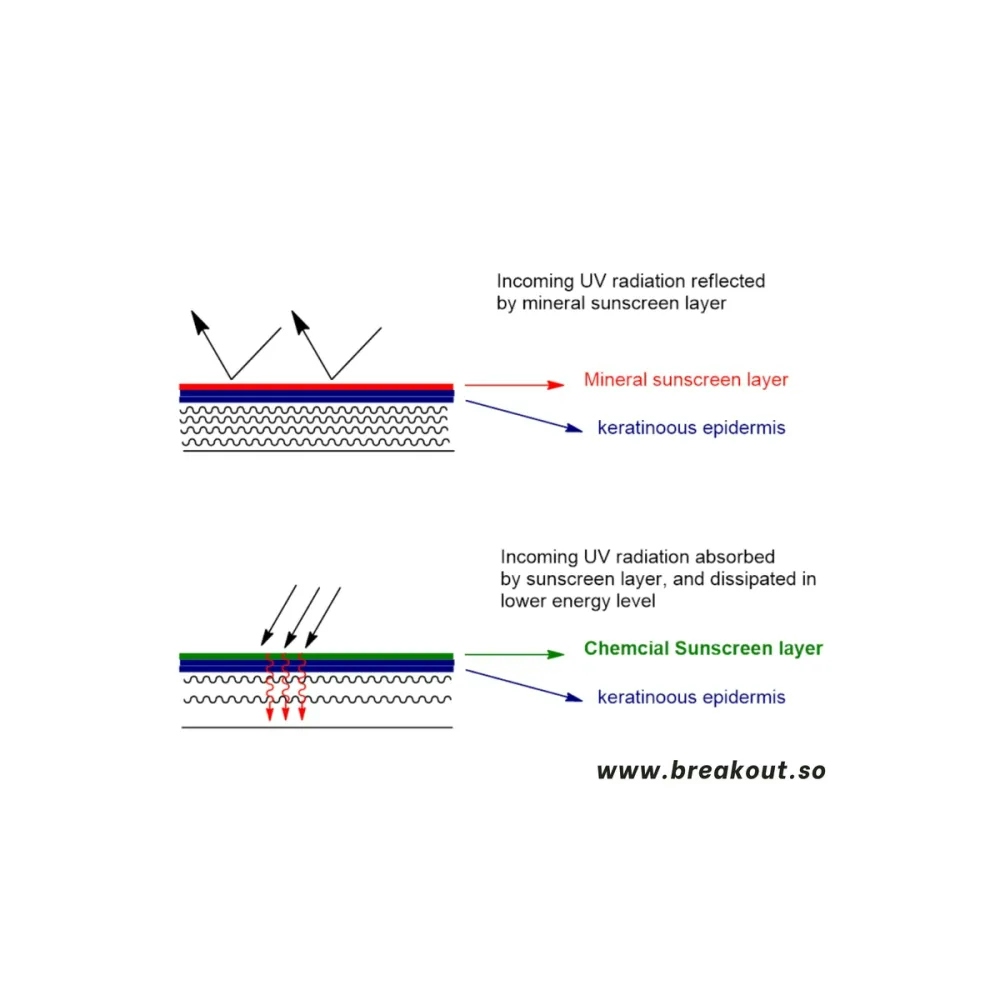
The Pros and Cons of Mineral and Chemical Sunscreens
There are several benefits to both types of sunscreens. Many products, in fact, combine the two to maximize them and minimize downsides. Here are the pros and cons of each.
Pros of Mineral Sunscreens
The main benefits of using a mineral sunscreen include:
- High efficacy and safety profile: Both zinc oxide and titanium dioxide are recognized as safe and effective by the FDA.
- Broad range protection: Mineral sunscreen can protect against both UV-A and UV-B light rays.
- Low toxicity: Some sunscreens, especially those using silicone-coated zinc oxide or titanium oxide, are very low in toxicity.
- Considered inert: Mineral sunscreen does not undergo any chemical change or degradation with UV radiation.
- Suitable for all skin types: You can use mineral sunscreens on any type of skin, including sensitive skin.
Cons of Mineral Sunscreens
As with any product, mineral sunscreens also have some downsides. The first one is that this type of sunscreen can block pores. As your skin surface is coated with an inorganic layer when you're using mineral or physical sunscreen, the penetration of other active ingredients can be made more challenging.
Another thing that many people dislike about mineral sunscreens is that they leave a “white cast” on its users; something more noticeable if your skin is tanned or darker. Cheaper mineral screens, in particular, can be noticeably thick when you apply them.
If you want to make sure your skin is protected, you will also need to use a high concentration of mineral sunscreen compared to chemical sunscreens.

Pros of Chemical Sunscreens
Chemical sunscreens, as we mentioned, also have several advantages. For instance:
- Protection against a broad UV spectrum: Chemical sunscreens can protect your skin against UV-A and UV-B light, too.
- Oil soluble: These sunscreens are oil soluble and, therefore, more resistant to sweating and exposure to humid or water conditions.
- Suitable for most skin types: You can safely use chemical sunscreens even if you have sensitive skin.
- Effective even at low concentration usage: You can use a lower amount of chemical sunscreen compared to what’s required for mineral alternatives.
Cons of Chemical Sunscreens
There are some downsides to using chemical sunscreens, too. On prolonged exposure to UV radiation, the organic molecules contained in these products may undergo degradation, undermining the protection and exposure to derivative chemical compounds. Also, because they are oil soluble, chemical sunscreens can penetrate the skin stratum corneum.5
The Verdict: Mineral vs Chemical Sunscreens: Which is Better for Your Skin?
Both mineral (or physical) sunscreens and chemical sunscreens have their benefits when it comes to protecting your skin against damage from the sun. If used correctly, they can both reduce the risk of skin cancers and precancers and prevent premature aging, including wrinkles, age spots, and sagging.
Anyone should use sunscreen, no matter if they tan easily or not. As we saw, there are two main types of them that can prevent UV radiation from reaching your skin. Mineral sunscreens block, and scatter the rays, and chemical sunscreens absorb them before they can do any harm. Both types of sunscreens have also been thoroughly tested and are considered effective and safe.
If you're wondering which is best for you, this might help: Mineral sunscreens tend to cause less skin irritation, although you will need to apply more of them and you’ll need to wait 20 to 30 minutes to absorb them. Chemical sunscreens, on the other hand, might cause skin reactions in some people (especially those with melasma or rosacea), but they will be absorbed faster and won’t leave a white film on the skin.
Both options are good, so you should consider the pros and cons listed above to make a decision on which one you feel is best for your skin. Any sunscreen is better than no sunscreen! Just make sure you put your SPF of choice as the last step in your morning routine and reapply your chemical or mineral sunscreen every two hours. If you’re more active, consider using a UV dot and/or use a sun stick for easier application. If you’re in the market for sunscreen, here are two recommendations.
Round Lab’s Birch Juice Moisturizing Sun Cream SPF50+ PA++++ is an amazing Korean sunscreen. It’s both hydrating and soothing with ingredients like hyaluronic acid, allantoin, and glycerin. It leaves a glowy finish when applied to the face.
Supergoop Unseen Sunscreen is a dual-action product that serves as a UV protector and primes the face for makeup! Formulated with SPF 40 (PA +++) and is sweat and water-resistant.
Do you want to talk about sunscreens and more skincare topics like this? Join us at Breakout!
References
- Kammeyer, A.; Luiten, R., Oxidation events and skin aging. Ageing research reviews 2015, 21, 16-29.
- Trüeb, R. M., Oxidative stress and its impact on skin, scalp and hair. Inter. J. of Cosmet. Sci 2021, 43, S9-S13.
- Jomova, K.; Baros, S.; Valko, M., Redox active metal-induced oxidative stress in biological systems. Transition Metal Chemistry 2012, 37 (2), 127-134.
- Wolf, R.; Matz, H.; Orion, E.; Lipozencic, J., Sunscreens-the ultimate cosmetic. Acta Dermatovenerol Croat 2003, 11 (3), 158-162.
- Diffey, B., Sunscreen claims, risk management and consumer confidence. Inter. J. of Cosmet. Sci 2020, 42 (1), 1-4.
